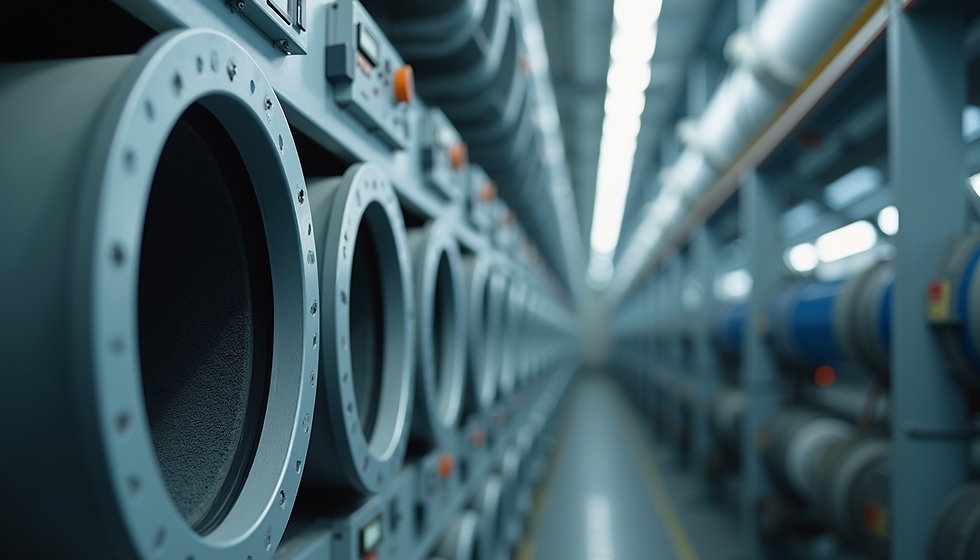Effective Solutions to Combat Air Pollution in India
- Piyush Zarekar
- Jul 18
- 4 min read
Updated: Jul 29
Air pollution is one of the most pressing environmental issues in India, impacting public health, ecosystems, and the economy. As cities expand and industries grow, the air we breathe becomes increasingly contaminated. This blog aims to explore effective solutions to combat air pollution in India, focusing on practical measures that individuals, communities, and governments can implement.
Understanding the Current State of Air Quality
India's air quality crisis is deeply rooted in various factors, including industrial emissions, vehicular exhaust, construction dust, and agricultural burning. According to the World Health Organization (WHO), nearly 1.2 million people die each year in India due to air pollution-related diseases. In cities like Delhi and Mumbai, particulate matter (PM2.5) levels often exceed safe limits, posing severe health risks.

Air Quality Solutions in Urban Areas
Urban areas are the hardest hit by air pollution. Implementing comprehensive air quality solutions can significantly mitigate these issues. Here are a few strategies:
Electrification of Public Transport: Transitioning to electric buses and vehicles can drastically reduce emissions. Cities like Bengaluru and Delhi are already investing in electric public transport systems.
Banning Old Vehicles: Enforcing a ban on older, polluting vehicles can clean the air. Governments should incentivize the replacement of old vehicles with newer, cleaner models.
Green Spaces: Increasing green spaces in urban areas helps absorb pollutants. Parks and urban forests not only enhance aesthetics but also improve air quality.
Real-time Monitoring: Implementing air quality monitoring stations allows citizens to be informed about pollution levels. Apps that provide real-time data can help individuals make informed decisions about outdoor activities.

What's a Solution to Air Pollution?
To effectively combat air pollution, technological innovations play a crucial role. Here are some viable options:
Air Purifiers: Investing in high-quality air purifiers can filter indoor air, providing a clean environment. For home and office use, consider products from trusted brands that specialize in air pollution solutions like this link.
Dust Suppression Techniques: Using water sprays and dust suppressants at construction sites can significantly reduce dust pollution. Adopting guidelines for construction practices is essential.
Waste Management: Proper segregation and disposal of waste can lessen the burning of waste, a significant source of air pollution. Promoting recycling and composting can also help.
Renewable Energy: Utilizing renewable energy sources like solar and wind can reduce dependency on fossil fuels, decreasing emissions from power generation.
Community Initiatives and Awareness
Community involvement is key to tackling air pollution. Here are some initiatives communities can undertake:
Awareness Campaigns: Organizing workshops and seminars can educate the public on the importance of air quality. Engaging schools and colleges in these campaigns can foster a culture of awareness from a young age.
Local Clean-up Drives: Communities can organize clean-up drives to reduce littering and pollution in local areas. Such initiatives not only beautify cities but also improve community spirit.
Advocating for Policy Changes: Community groups can influence policymakers to adopt stricter air quality regulations. Grassroots campaigns may push for better enforcement of environmental laws.

Government Action and Policy Improvements
Strong governmental action is crucial for implementing effective air quality solutions. Some key measures include:
Stricter Regulations: Governments should enforce stricter emissions standards for industries and vehicles. Policies should also focus on monitoring and compliance.
Investment in Technology: Investing in air quality improvement technologies, such as advanced filtration systems in factories, can significantly reduce emissions.
Subsidies for Cleaner Energy: Offering financial incentives for using renewable energy can encourage businesses and households to shift towards greener alternatives.
The Role of Individuals
While larger-scale solutions are vital, individuals can also make a difference in combating air pollution. Here are some actions that everyone can take:
Carpooling and Public Transport: Reducing the number of vehicles on the road can cut down emissions significantly. Carpooling and using public transport are effective ways to achieve this.
Energy Efficiency at Home: Employ energy-saving appliances and LED lighting to reduce energy consumption, indirectly lowering air pollution from power generation.
Planting Trees: Individuals can contribute by planting trees in their communities. Trees not only improve air quality but also provide shade, which is beneficial in urban heat islands.
Indoor Air Quality Management: Ensure good ventilation in homes and workplaces, and use air purifiers to maintain clean indoor air.
Moving Towards a Clean Air Future
Air pollution is not an insurmountable problem; with collective efforts, effective air quality solutions can lead to a healthier environment. By adopting integrated approaches at both the community and government levels while also empowering individuals, India can take significant strides towards cleaner air.
In summary, it is imperative that everyone, from individual citizens to policymakers, plays their part in reducing air pollution. The solutions presented in this blog not only address current air quality challenges but also pave the way for a sustainable future. As we push forward, a concerted effort towards adopting and promoting these air pollution solutions will ensure that future generations inherit a cleaner, healthier planet.

By investing in solutions that address air pollution, we can create a lasting impact on the health and well-being of our communities. Let’s embrace the responsibility to foster a cleaner air future for all.









Comments